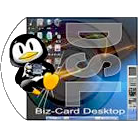Application Discontinued: Windows 2000 might have been discontinued. View alternatives

Windows 2000
Windows 2000 is a professional operating system developed by Microsoft, bridging the gap between the consumer-focused Windows 9x series and the server-centric Windows NT line. It was designed for business environments, emphasizing stability, security, and networking capabilities.
About Windows 2000
Windows 2000, released in February 2000, was a significant advancement for Microsoft's operating system lineup. Built on the robust Windows NT kernel, it offered a level of stability and reliability that surpassed its predecessors in the Windows 9x family. It was available in several editions catering to different needs, including Professional for desktops, Server for small businesses, Advanced Server for larger enterprises, and Datacenter Server for high-end computing environments.
Key features of Windows 2000 included:
- Active Directory: A powerful directory service for managing network resources, users, and policies.
- NTFS 5.0: An updated file system with features like disk quotas, encryption, and sparse files, enhancing security and storage management.
- Improved Plug and Play: Offering better hardware detection and installation compared to previous NT versions.
- Integrated Internet Explorer 5: Providing enhanced web browsing capabilities.
- Encrypted File System (EFS): Allowing users to encrypt files and folders for added data security.
- Microsoft Management Console (MMC): A customizable framework for administrative tools.
Windows 2000 focused heavily on providing a solid foundation for business computing. Its networking features were particularly strong, making it a popular choice for organizations building client-server architectures. While it retained a familiar user interface similar to Windows 98, its underlying architecture was significantly more stable and secure. It also offered backward compatibility to a degree, allowing many older applications to run, although it primarily targeted new levels of enterprise computing. Windows 2000 laid the groundwork for future Windows versions like Windows XP and Windows Server 2003.
Pros & Cons
Pros
- Significantly more stable than Windows 9x.
- Introduced Active Directory for centralized network management.
- Enhanced security features with NTFS 5.0 and EFS.
- Robust multi-tasking capabilities.
Cons
- Higher system requirements than Windows 9x.
- Driver compatibility could be an issue for some hardware.
- Required regular security updates and patches.
- Support has been discontinued by Microsoft.
What Makes Windows 2000 Stand Out
Enhanced Stability and Reliability
Leveraged the NT kernel for a significantly more stable computing experience than Windows 9x.
Business-Focused Features
Included features like Active Directory and NTFS 5.0 tailored for enterprise environments.
Features & Capabilities
12 featuresExpert Review
Windows 2000 Review
Windows 2000 represented a pivotal moment in Microsoft's operating system development, solidifying the NT kernel as the foundation for both professional and eventually consumer desktop environments. Released in early 2000, it aimed to bridge the gap between the relatively unstable Windows 9x series and the server-oriented Windows NT 4.0. It largely succeeded in this goal, offering a more robust and secure platform compared to its 9x predecessors while bringing some of the manageability benefits of NT to a broader audience.
The core strength of Windows 2000 lay in its NT kernel foundation. This provided a significant leap forward in terms of stability and reliability. Crashes were far less frequent than on Windows 95 or 98, making it a much more suitable choice for business-critical applications. The multi-tasking was preemptive and more robust, preventing one misbehaving application from bringing down the entire system.
For businesses, the introduction of Active Directory was a major highlight. This powerful directory service revolutionized the way network resources, user accounts, and security policies could be managed in a centralized manner. It drastically simplified network administration for organizations of all sizes. The updated NTFS 5.0 file system also brought important advancements, including disk quotas for managing storage space, file encryption (EFS) for enhanced data security, and support for reparse points and sparse files.
The user interface in Windows 2000 was familiar to users of previous Windows versions, incorporating elements of the Windows 98 interface, such as the Start Menu and taskbar. While not a radical visual departure, the underlying improvements to stability and performance were immediately noticeable to those migrating from Windows 9x. Plug and Play support was also improved, making it easier to install and configure hardware devices compared to earlier NT versions.
Windows 2000 was released in several editions to cater to different market segments. Windows 2000 Professional was the desktop edition, targeting business users and power users. Windows 2000 Server, Advanced Server, and Datacenter Server provided scalable solutions for various server workloads, from small workgroups to large enterprise data centers.
While Windows 2000 offered significant advancements, it was not without its challenges. Driver compatibility could sometimes be an issue, particularly for older or specialized hardware. The system requirements were also higher than Windows 9x, requiring more powerful hardware for optimal performance. Security vulnerabilities were also discovered over time, necessitating the release of numerous service packs and security updates, which could be a complex process for administrators to manage.
In retrospect, Windows 2000 was a crucial stepping stone in the evolution of Windows. It successfully merged the stability and security of the NT architecture with a user-friendly interface, paving the way for the highly successful Windows XP. Its focus on networking and business features made it the standard operating system for professional environments for several years. Although officially discontinued and no longer supported by Microsoft, its impact on the development of subsequent Windows versions and enterprise IT infrastructure is undeniable.













